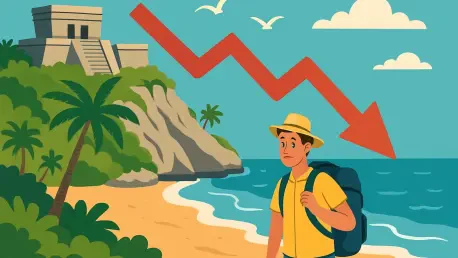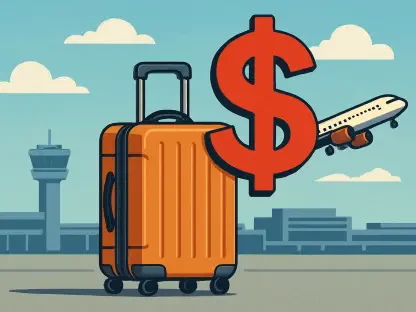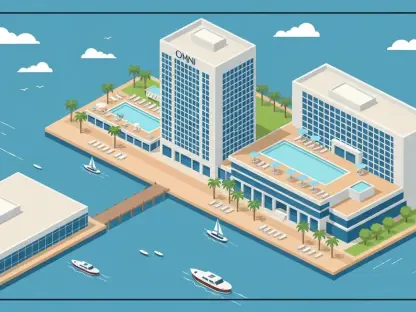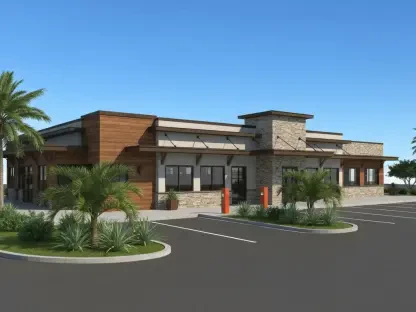Tulum, nestled in Quintana Roo along the Mexican Caribbean, has long captivated travelers with its stunning beaches, ancient Mayan ruins, and bohemian charm, but a troubling trend has emerged in recent times, casting a shadow over this once must-visit destination. Now grappling with a significant drop in tourist numbers, this coastal paradise raises concerns among local authorities, business owners, and workers who depend on the industry for their livelihoods. Reports indicate a complex web of challenges, from mismanagement of key natural attractions to faltering federal infrastructure projects, all contributing to a diminished appeal for visitors. At the center of this decline is Jaguar Park, a critical site managed by the Secretaría de la Defensa (Sedena), which has drawn sharp criticism for its restrictive policies and high costs. As frustration mounts among stakeholders, the urgency to address these issues becomes undeniable, prompting government intervention and local advocacy for change. This situation not only threatens Tulum’s reputation but also the economic stability of the region, setting the stage for a deeper exploration of the root causes and potential solutions.
Challenges at Jaguar Park
The management of Jaguar Park, operated by Mundo Maya under Sedena’s oversight, stands as a primary factor in Tulum’s tourism downturn, with policies that have alienated both visitors and locals. High entry fees and restricted access to municipal beaches, which are part of the park’s domain, have turned away countless tourists who once flocked to these iconic spots. The Tulum archaeological site, a centerpiece of the park, has reportedly seen a staggering 50 to 60 percent drop in attendance, a statistic that underscores the severity of the issue. Complaints about the visitor experience, including limited beach access, have reached the highest levels of government, with President Claudia Sheinbaum publicly acknowledging the need for reform. This dissatisfaction has pushed many travelers to seek alternatives like nearby cenotes or free coastal areas, further eroding the park’s draw as a key attraction in the region.
Beyond the financial barriers, allegations of internal mismanagement within Jaguar Park have fueled local discontent and raised questions about transparency. Reports of layoffs favoring relatives of Sedena personnel have sparked accusations of nepotism, deepening mistrust among the community. Tulum City Councilor Eugenio Barbachano Losa has been vocal about how these decisions exacerbate the tourism decline, pointing to a disconnect between park policies and the needs of both visitors and residents. The restrictive measures not only impact the number of tourists but also tarnish the overall perception of Tulum as a welcoming destination. As these management flaws persist, the frustration among stakeholders grows, highlighting a critical need for oversight and policy adjustments to restore confidence in one of the area’s most vital assets.
Infrastructure Shortfalls Hindering Growth
Federal infrastructure projects, initially heralded as game-changers for Tulum’s tourism, have instead become stumbling blocks due to operational inefficiencies and poor planning. The Tulum International Airport, designed to ease access for global travelers, struggles with logistical challenges such as exorbitant handling costs and inadequate ground transportation. These issues have led to significant setbacks, with airlines like Discover Airlines opting to cancel routes for the current and upcoming seasons, citing unsustainable conditions. The lack of seamless connectivity has deterred international visitors, undermining the airport’s potential to boost arrivals and leaving local businesses waiting for the promised economic uplift.
Similarly, the Maya Train, another ambitious federal initiative, has failed to deliver the anticipated surge in tourist traffic to Tulum. Low ticket sales reflect broader concerns about pricing and accessibility, with many travelers finding the service inconvenient or unaffordable. Councilor Barbachano Losa has criticized these projects for falling short of expectations, noting that the infrastructure was meant to catalyze growth but instead symbolizes inefficiency. The absence of tangible benefits from these investments has left stakeholders questioning the government’s approach to development in the region. Without swift improvements in logistics and cost management, these projects risk becoming more of a burden than a boon to Tulum’s struggling tourism sector.
Economic Impact on Local Communities
The decline in Tulum’s tourism has had a profound effect on local livelihoods, with workers across various sectors bearing the brunt of reduced visitor numbers. Boatmen, represented by Lenín Pacheco Aguilar of the Dorados de Playa Maya cooperative, report a drastic reduction in business, with many of their vessels operating at a fraction of capacity or sitting idle altogether. Fears of displacement loom large as park management introduces its own services, potentially sidelining these workers. This pattern of exclusion mirrors the experiences of taxi drivers and artisans, who have already been pushed out by similar decisions, highlighting a systemic issue of prioritizing corporate interests over community welfare.
This economic hardship reveals a deeper tension between tourism development and the well-being of Tulum’s residents, many of whom rely on the industry for survival. The displacement of local workers not only threatens individual incomes but also undermines the cultural fabric that makes Tulum unique. As federal projects and park policies continue to marginalize these communities, frustration builds over the lack of inclusive growth. The stark contrast between the vision of progress and the reality of economic struggle paints a troubling picture of a destination at odds with its own identity, prompting urgent calls for policies that balance development with the needs of the local population.
Efforts to Reverse the Downturn
In response to the mounting challenges, governmental and local leaders have initiated steps to address Tulum’s tourism crisis, focusing on both immediate fixes and long-term strategies. President Claudia Sheinbaum has directed a comprehensive review of Jaguar Park’s management, tasking Tourism Secretary Josefina Rodríguez with leading a working group to tackle issues like accessibility and signage. This federal intervention signals a recognition of the severity of the complaints surrounding the park, aiming to restore its appeal through policy adjustments. The emphasis on collaboration with local stakeholders suggests a willingness to bridge the gap between national directives and regional concerns, though the effectiveness of these efforts remains to be seen.
At the municipal level, Tulum Mayor Diego Castañón Trejo has taken proactive measures by engaging with hoteliers, taxi unions, and other business groups to enhance the visitor experience. Initiatives focus on improving mobility, ensuring fair pricing, and addressing nightlife concerns to rebuild trust among tourists. These local efforts aim to counteract the negative perceptions fueled by park and infrastructure issues, promoting Tulum as a destination worth visiting. By fostering partnerships and avoiding the politicization of the crisis, the mayor seeks to create a unified front to tackle the downturn. While these actions mark a positive step, sustained commitment and coordination between federal and local levels will be crucial to reversing the decline.
Path Forward for Tulum’s Recovery
Reflecting on the efforts to address Tulum’s tourism challenges, it becomes evident that a multifaceted approach is essential to mend the fractures caused by park management and infrastructure failures. The review initiated by President Sheinbaum, alongside local collaborations led by Mayor Castañón Trejo, lays a foundation for dialogue between stakeholders who have long felt unheard. These steps, taken with urgency, aim to correct the missteps at Jaguar Park and rethink the rollout of projects like the Maya Train, ensuring they align with the destination’s needs.
Looking ahead, actionable solutions must prioritize accessibility and affordability at key attractions while enhancing infrastructure to support seamless travel. Establishing transparent management practices at Jaguar Park could rebuild trust, while targeted investments in ground transportation and cost reductions at Tulum International Airport might lure back airlines and visitors alike. Engaging local communities in decision-making processes stands as a vital component, ensuring that growth benefits residents rather than displacing them. As Tulum navigates this critical juncture, sustained focus on balancing national ambitions with grassroots realities will determine whether this beloved destination can reclaim its status as a global hotspot.









